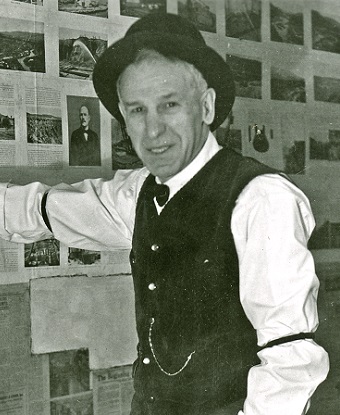Last updated: October 26, 2021
Person
George Rapuzzi

NPS, KLGO, George & Edna Rapuzzi Collection, KLGO 55875. Gift of the Rasmuson Foundation.
George was born in 1899 in Skagway. His father George, was the first in his family to arrive in Skagway, just before his mother, who came on the City of Seattle in June 1898. When George was growing up, his parents owned a small market on Broadway. As a teenager, he sold newspapers in Skagway.
As an adult, George was a highly skilled machinist and spent 50 years working for the White Pass railroad. He and his wife Edna were one of the last gold rush families in Skagway. George hiked over the Chilkoot Trail many times, and also rode his motorcycle up and over White Pass and rode it on the ties (i.e., between the rails). He was also a pilot. Prior to 1948, there was no road between Skagway and Dyea. George took tourists over to Dyea beginning in 1917 and ran a boat service until the late 1950s.
While other people cleaned out old stuff, George was there to collect it. For example, he rescued the door of an old gold rush era jail from the dump. George hiked the Chilkoot Trail several times and spent many hours scavenging “gently decaying” buildings around Dyea. Some of the artifacts from Dyea include an original tram bucket from the Chilkoot Railroad and Transportation Company, the craps table he hauled out at Sheep Camp, and other similar articles.
George purchased the Alaska's first Young Men's Christian Association (Y.M.C.A.) gymnasium and Meyer’s complex in 1922 and used the building as an automobile garage and warehouse until his death in 1986. George's vast gold rush era collection was purchased by the Rasmuson Foundation. In 2008 the Rasmuson Foundation donated most of the collection to the National Park Service and the Municipality of Skagway. The Y.M.C.A., Meyer's complex, and Jeff. Smiths Parlor Museum were all donated to the park as well.
